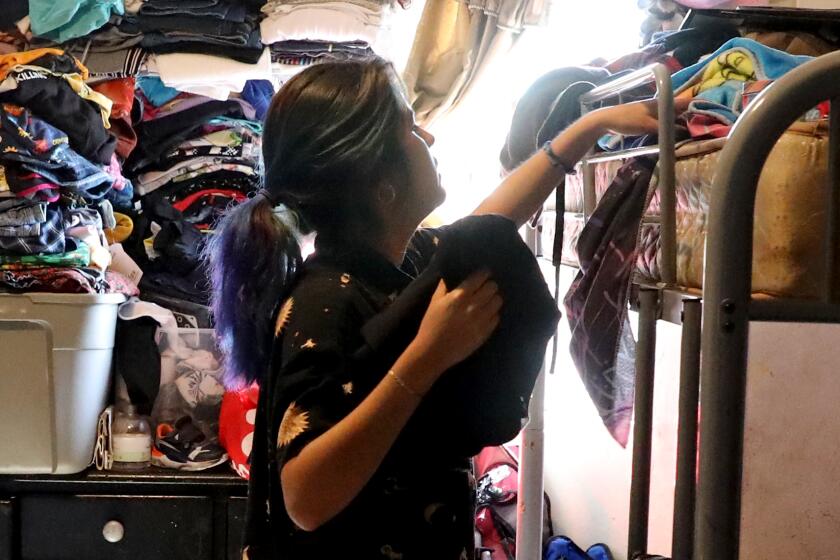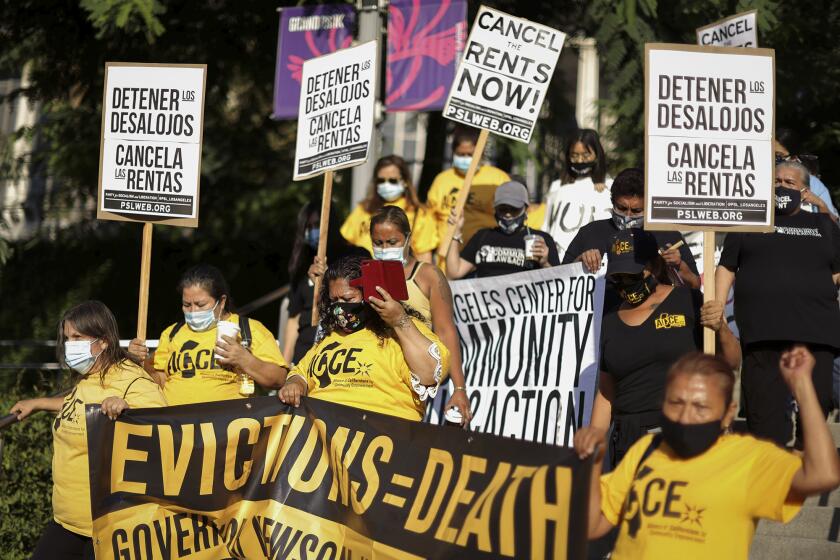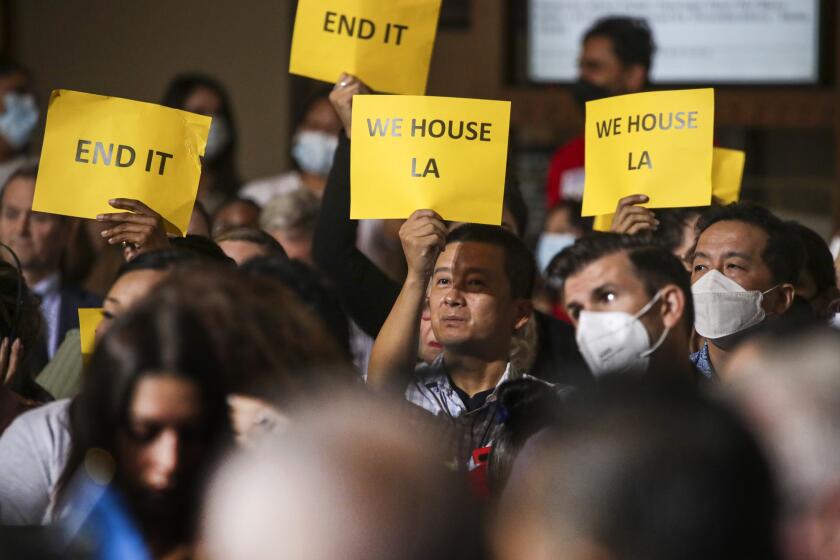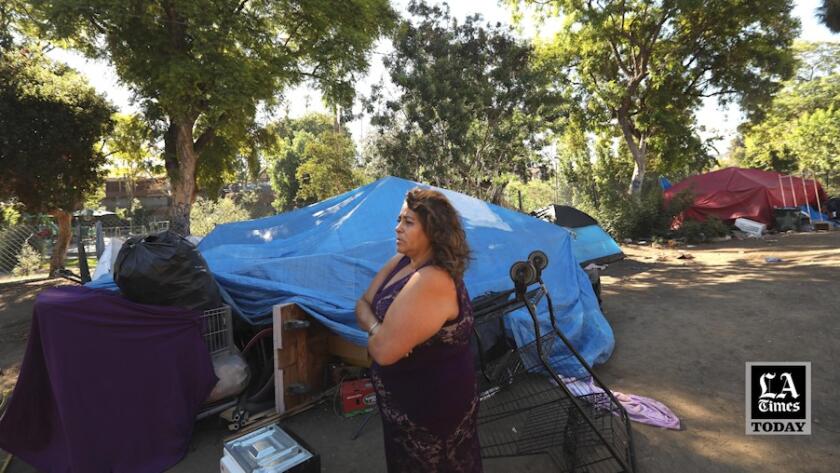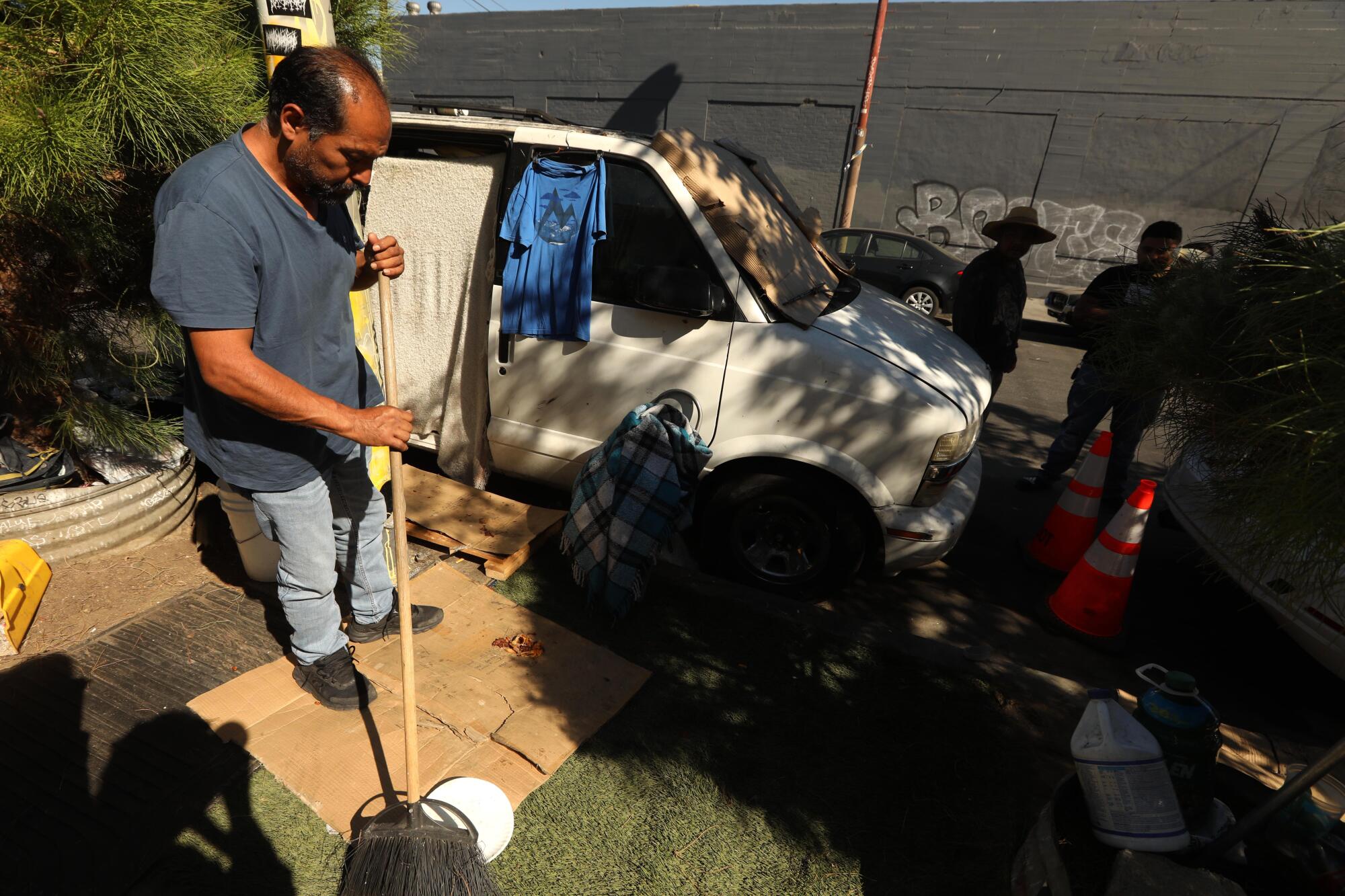
- Share via
Miguel Meneses and his wife were struggling to get by when the pandemic hit. They lost their rent-controlled apartment in Boyle Heights and moved with their three children to a rental house in Pomona that cost four times as much.
In summer 2020, Meneses, an Uber driver, fell ill with long COVID symptoms and couldn’t work for months. As the pandemic lurched on, his wife, Sandra Torres, lost the last of the eight cleaning service clients she had left.
“It was all downhill from there,” said Meneses, 49, in an interview, as Torres, 45, teared up.
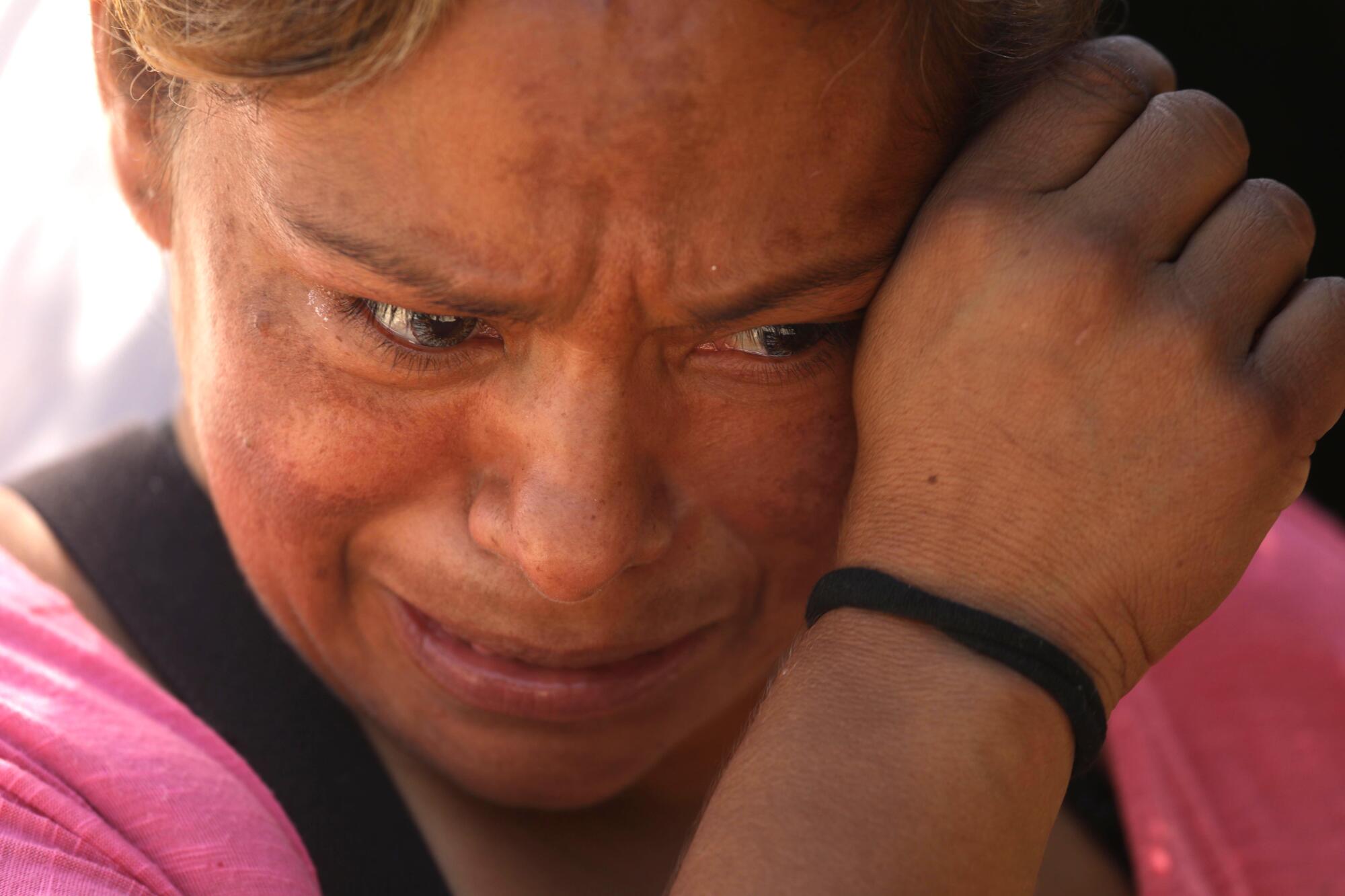
Unaware of the eviction protections and financial programs available, the couple borrowed $12,000 from family and friends. In February, broke and out of favors, they moved into a van along an industrial street off Olympic Boulevard in Boyle Heights.
The family’s descent into homelessness reflects a growing problem in Los Angeles County, where in the last two years homelessness among Latinos has outpaced other demographic groups as COVID-19 and the housing shortage hammered the working class.
Latinos have long relied on social ties, squeezing into crowded spaces and sharing the burden of unaffordable rents, to avoid joining L.A.’s ever-swelling homeless population. But rising rents — and incomes that are not commensurate — have made it increasingly difficult for low-income Latinos to keep roofs over their heads.
“The folks that are in the densest housing situations at some point just break,” L.A. Mayor Eric Garcetti said in an interview.
While Black people are disproportionately represented in the homeless population, they and other demographic groups saw a decline in homelessness over the last two years. But homelessness among Latinos, who make up nearly half of the county’s population, saw a 26% increase in the county and 30% in the city, according to the Los Angeles Homeless Services Authority.
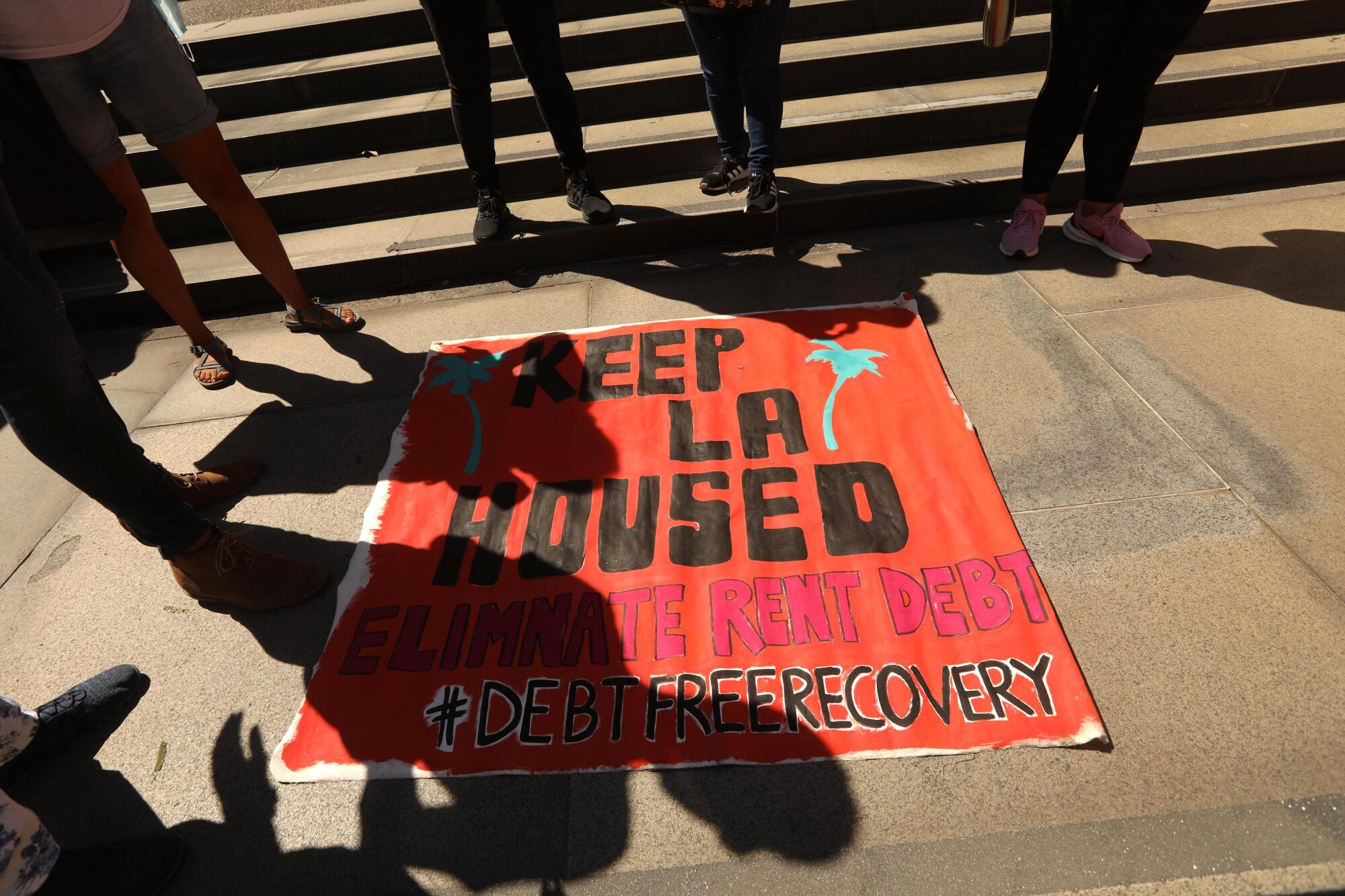
Latino homelessness increased across the state. In San Francisco, it rose by 55% from 2019 to 2022. In Sacramento County, over the same time frame, it went up 87%. And San Diego County saw it jump by 29% from 2020 to 2022.
Alarmed by the growth in Los Angeles, the county Board of Supervisors unanimously approved a motion requesting that the county study how gaps in the social services system could be contributing to the growing number of unhoused Latinos.
“The 2022 Homeless Count numbers may signal an end to what has previously been referred to as the ‘Latino paradox’ — while Latinos experience high rates of poverty, they appeared to be less likely to fall into homelessness,” Supervisor Hilda Solis wrote in the motion. “The paradox was often explained by pointing to strong family and social ties that prevented homelessness among Latinos.”
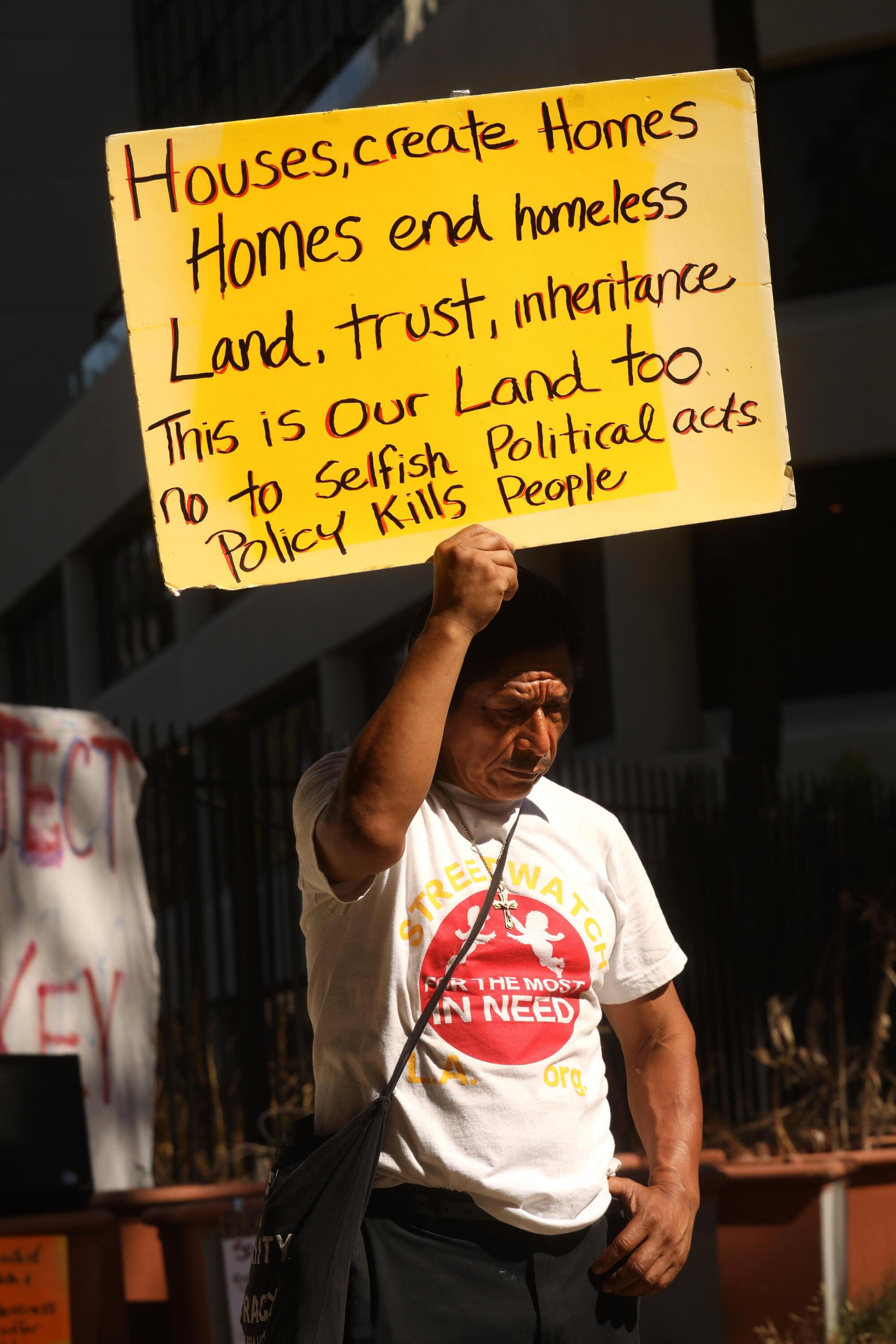
Even before the pandemic arrived, Black and Latino families were spending most of their income on rents due to stagnant wages and a shortage of affordable housing.
But COVID-19 hit Latinos particularly hard. Many worked low-paying jobs that were critical to transporting goods, keeping food processing plants operating and maintaining grocery stores — all while bearing the brunt of the virus. Many others lost their employment.
Latinos without American citizenship had further troubles. Those who had informal jobs or were living in the country without documentation were ineligible to receive some state and federal assistance. And many of those who were eligible were afraid to do so because of then-President Trump’s “public charge” rule, a federal immigration policy that could deny green cards to immigrants who receive public assistance such as food stamps, Medicaid and housing vouchers. The policy, which the Biden administration stopped enforcing, will end in December.
“I think COVID-19 was really a moment of crisis that pushed a lot of people that were already living on the edge, already living in these precarious housing situations ... it pushed them over,” said Melissa Chinchilla, a policy expert with the UCLA Latino Policy and Politics Institute and researcher with the David Geffen School of Medicine at UCLA.
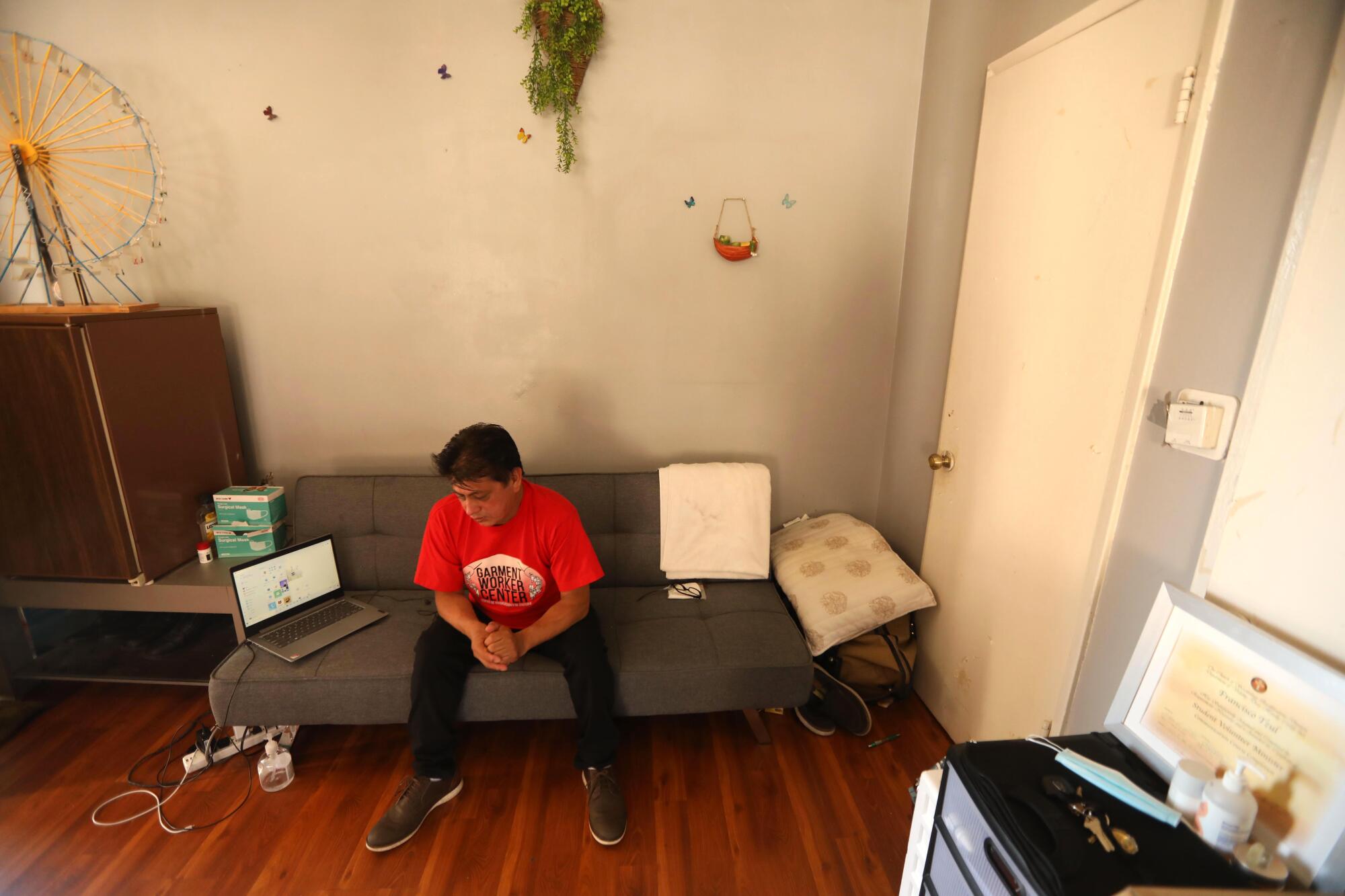
During the pandemic, Francisco Tzul, a Guatemalan immigrant, found himself unhoused for the first time in his life.
For about eight years, Tzul, a garment worker, shared an apartment with three other men in the Westlake neighborhood of L.A. Two of them slept in the bedroom, the other two in the living room, putting their wages toward their $1,000 rent.
In May 2020, Tzul became sick with COVID-19 and was hospitalized for two weeks. When he recovered and returned home, his roommates wouldn’t let him back in, fearing infection.
The Garment Worker Center, a worker rights organization, helped put Tzul in a hotel on skid row for two weeks. He later spent months sleeping on the kitchen floor of a Hollywood apartment. Four people shared the living room, two were in the bedroom and one slept in the closet.
Now, the 58-year-old pays $500 to sleep on a gray futon in the living room of an apartment.
“We have to live in these conditions,” he said.
Throughout L.A., residents rent storage units to free up space and turn closets, kitchens and living rooms into makeshift bedrooms. Furniture stores stock up on sofa beds, twin-size mattresses and bunk beds that can fit in compact spaces. Senior citizens whose Social Security benefits aren’t enough to cover the rent search desperately for roommates to share the cost.
Any unexpected hit, such as a job loss or illness, can send people tumbling into the street.
Chinchilla, who has studied Latino homelessness in L.A., says cases such as Tzul are among the reasons why Latinos are undercounted in the homeless count, which documents people living in shelters or on the street.
The U.S. Department of Housing and Urban Development’s defines homelessness as an individual or family who lacks a fixed, regular or adequate nighttime residence such as those living in emergency shelters, transitional housing or places not meant for habitation.
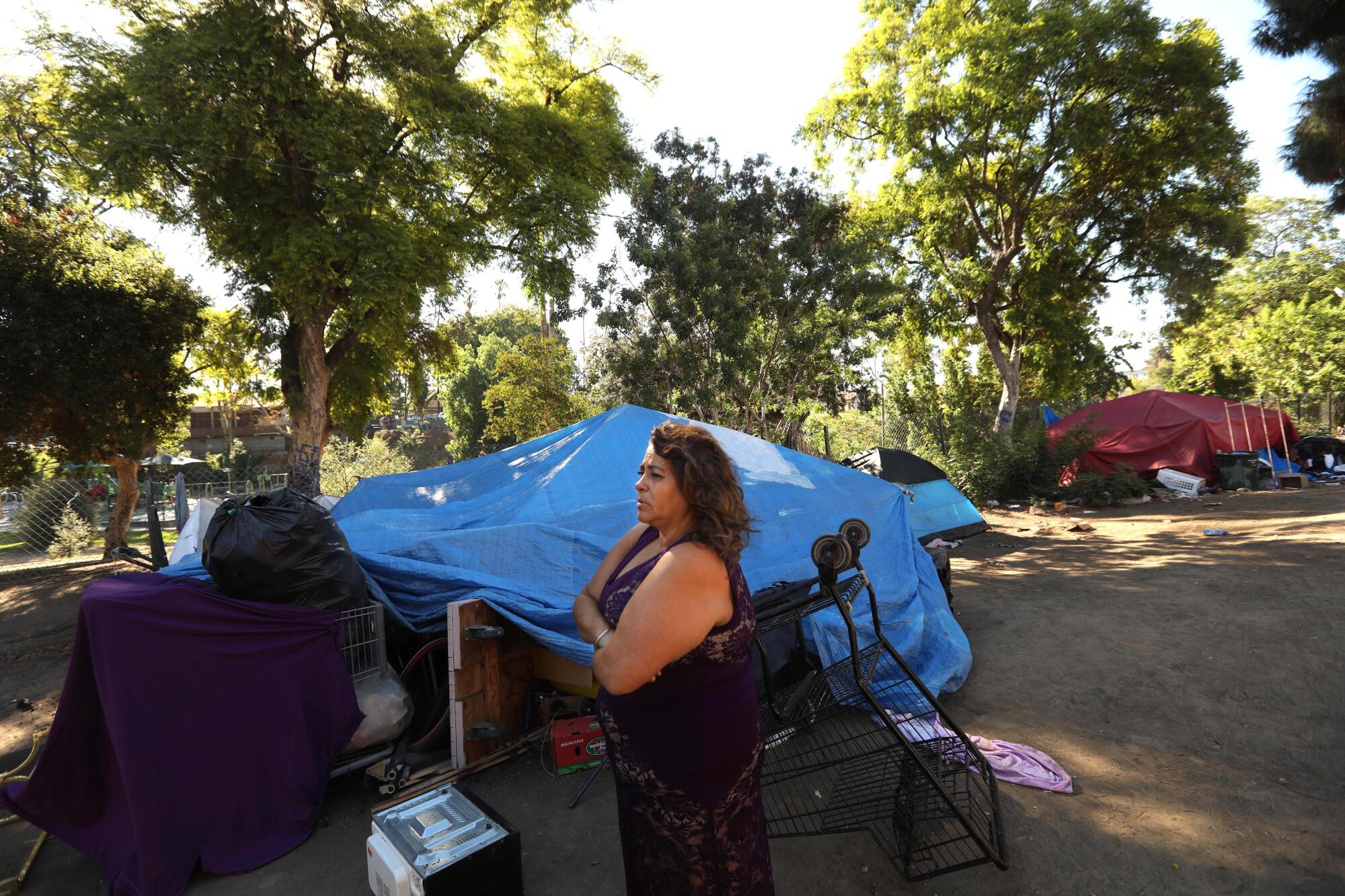
“I always like to ask people, what does it mean to be fully housed? If you’re living in a one-bedroom apartment with seven or eight other people, does that mean you’re fully housed?” Chinchilla said. “If we thought a little bit more about what would be our definition of being housed, they would probably not fall within that category, but yet they’re not going to be captured within the homeless count numbers. Therefore, we continue to see the underrepresentation.”
More homes are overcrowded in L.A. than in any other large U.S. county, a Times analysis of census data found — a situation that has endured for three decades.
Stephanie Klasky-Gamer, president and chief executive of LA Family Housing, echoed that sentiment.
LA Family Housing, a nonprofit, is the lead homeless service provider in the San Fernando and Santa Clarita valleys, an area where an estimated 8,000 to 9,000 people are experiencing homelessness.
Klasky-Gamer said more than 40% of the population in the region are Latinos who work in construction, restaurants and hotels. They also live in homes with multiple families or reside in converted garages. As a result, she said, homelessness in this part of the county is hidden.
The pandemic’s crippling effect on families forced many to seek help from the organization.
Since July 2020, LA Family Housing saw a 76% increase in the number of people who sought homeless services for the first time. Many of the applicants were Latinos. Between July 2021 and June 2022, the agency saw 2,522 new program enrollments compared with the previous year when it saw 1,429.
“It’s a really huge number,” Klasky-Gamer said. “The Latino community saw record unemployment during the pandemic, which, as we know, leads to food insecurity, housing insecurity and loss of housing.”

Ivan Corado-Vega, manager of San Francisco’s Latino Task Force, heard about those struggles from residents who were in constant distress over the possibility of losing their homes.
He said people who worked three or four jobs to maintain the rent were down to one job or faced reduced hours. People with informal jobs and housing agreements experienced even more of a challenge accessing financial aid.
Immigrants living in the country without documentation were ineligible for federal housing assistance or unemployment benefits. Although they were able to apply for emergency rental assistance programs, language barriers, lack of internet access and fear of deportation prevented some from applying. In other cases, organizers said, some people never received the assistance they applied for. The situation was even more of a headache for Latin American Indigenous groups who speak a language other than Spanish.
“It’s just layer on layer on layer of system barriers that just increasingly put pressures on an already vulnerable population,” Corado-Vega said.
Although the pandemic only worsened matters, the number of homeless Latinos in L.A. County has been steadily rising over the years. When the Los Angeles Homeless Services Authority conducted its annual homeless count in 2015, it found there were 11,082 Latinos living in shelters or the streets. Today that number is 28,945.
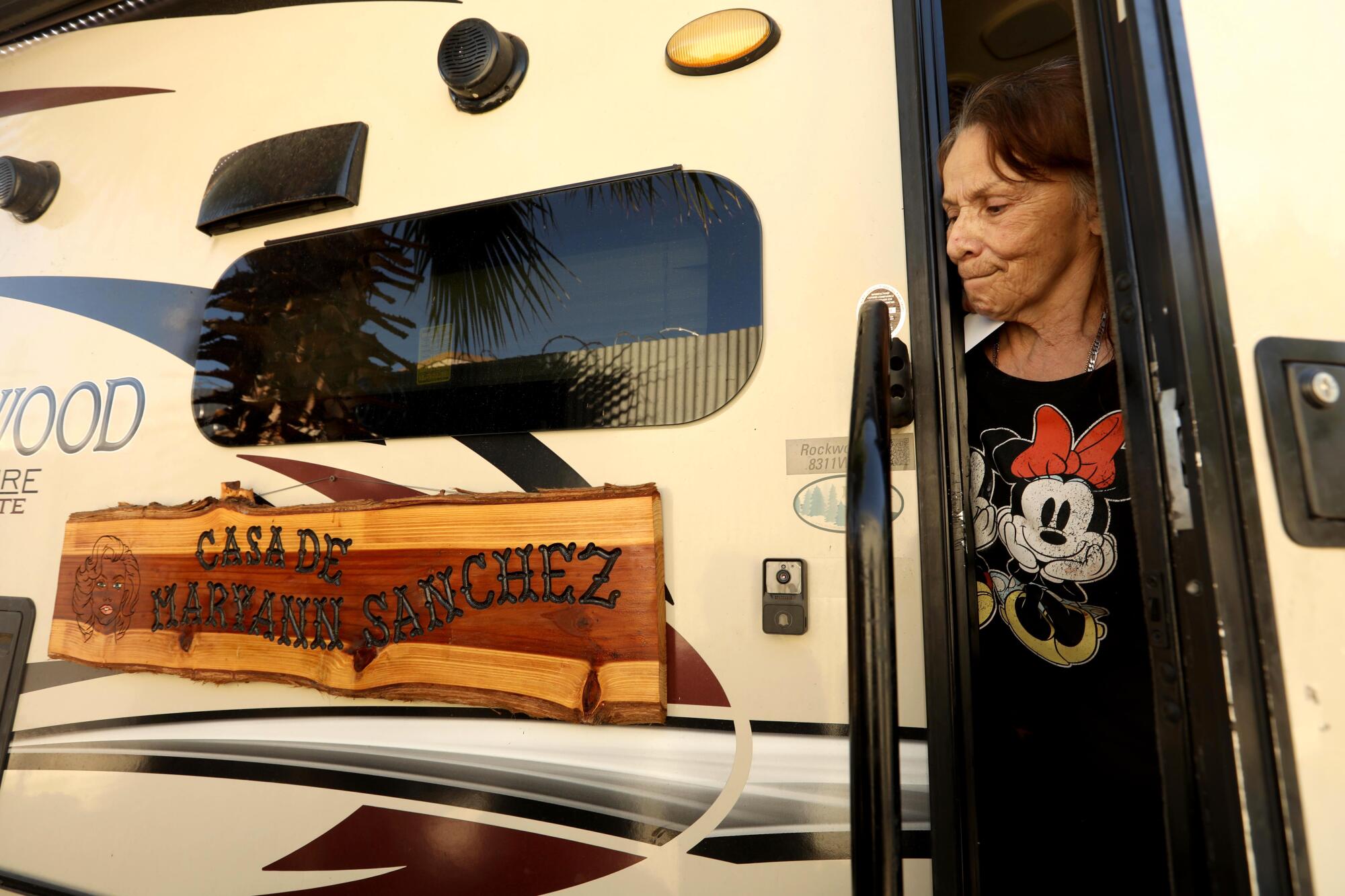
In Boyle Heights, near downtown L.A., a wooden sign outside an RV welcomes visitors to the “Casa de Maryann Sanchez.” Sanchez, 72, her husband and daughter have lived in the RV for five years, parked next to a pallet manufacturer.
The trio previously shared a two-bedroom apartment in Uptown Whittier. As the rent rose, she said, they were unable to pay and were evicted.
Sanchez and her family relocated to Boyle Heights in the hopes of getting into Estrada Courts, the low-income housing project where she’d grown up. But the waiting list was long.
Now, they rent the RV from a friend for $500 a month, much cheaper than what they’d pay for an apartment.
“It’s not that we don’t want to pay rent,” she said. “We can’t afford it.”
Elena Hernandez has endured similar struggles. The 54-year-old shared a home in Palmdale with her sister, but after her sister died of cancer, Hernandez could no longer keep up with the $2,100 monthly mortgage.
She was forced to move out of the house in 2017 and from there rented a room from a family living in Section 8 housing in Lancaster. Afterward she moved into a garage nearby, until the owner told her she had to leave in 2019. At that point, Hernandez became homeless.
She lived in her car off and on, before landing back in L.A. in 2021. After applying “for everything I could for assistance,” Hernandez ended up in the Eagle Rock tiny-home village earlier this year. She shares her home, the width of a parking space, with her 8-year-old dog, Brownie.
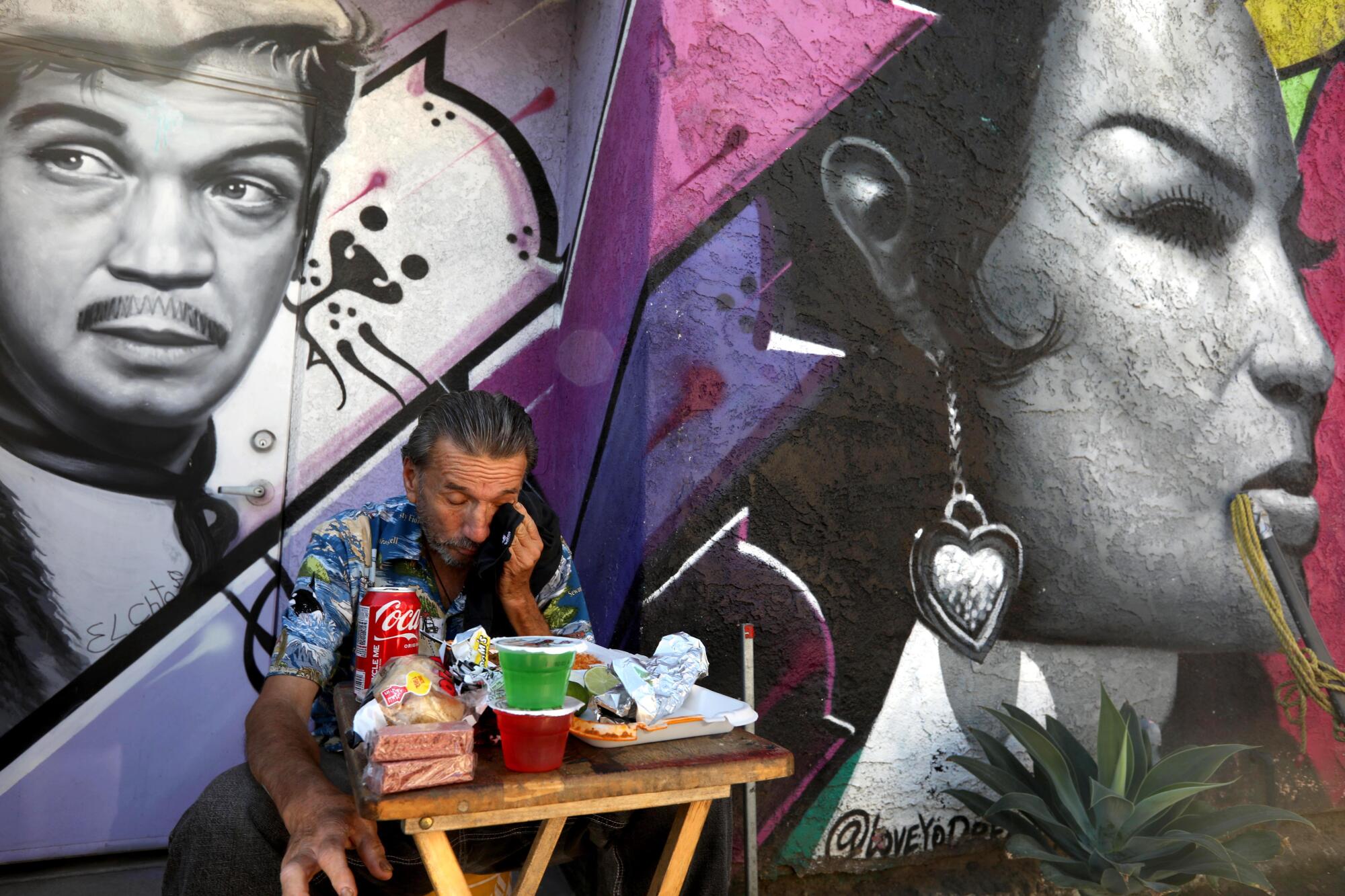
Hernandez, who makes $19 an hour working at an imaging center in Pasadena, estimates she’s around $10,000 in debt. She owes money on a loan she used to move to L.A., for hospital bills for two falls and for when she became ill with COVID-19. Her focus now, she said, is paying off her bills.
Getting her own apartment anytime soon feels out of reach.
“Right now, the income that I have is still not sufficient,” she said. “If I had a husband, yes, it would be affordable. It takes two incomes, not just one. You have to have a really nice, good income to be by yourself.”
There’s concern that Latino homelessness may worsen in the coming months as pandemic protections come to an end.
“I think COVID-19 was really a moment of crisis that pushed a lot of people that were already living on the edge, already living in these precarious housing situations ... it pushed them over.”
— Melissa Chinchilla, a health services specialist and associate investigator at the UCLA Latino Policy and Politics Institute.
At a mayoral debate in September, when asked whether they would extend eviction protections, both candidates said they would. Developer Rick Caruso clarified that he would extend it but would change the process to be fair to both landlords and tenants.
Rep. Karen Bass worried what would come without the eviction moratorium. “We can’t just have that go away and then have thousands of people on our street,” she said. “That would be a disaster.”
This month, the L.A. City Council voted to end evictions protections starting Feb. 1, allowing landlords to once again evict tenants who have fallen behind on their rent.
The county’s protections are expected to end even sooner, as early as Dec. 1.
The Board of Supervisors voted Tuesday to cement the termination of the pandemic-era eviction moratorium and other renter protections
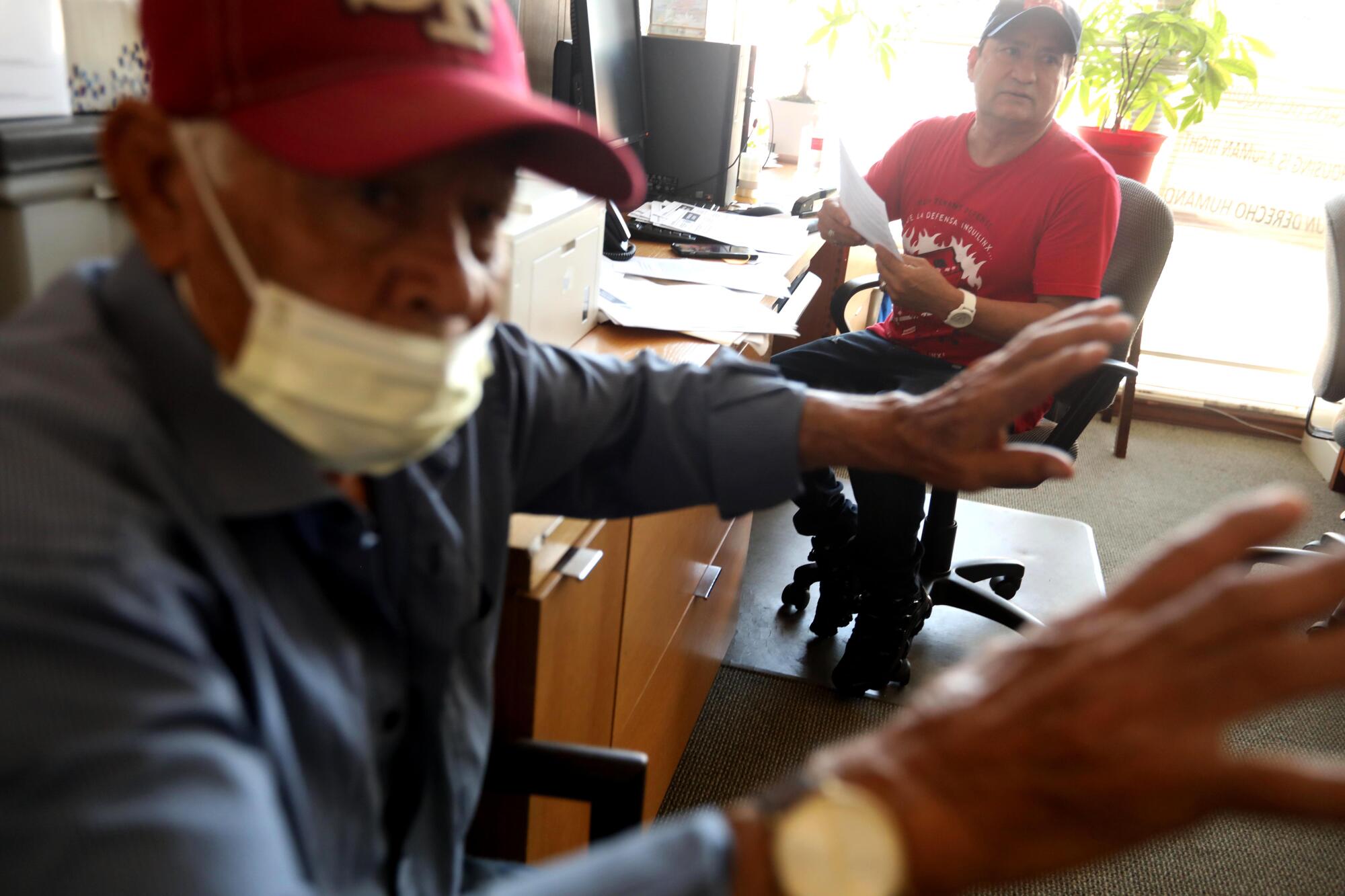
In Westlake, José Félix Cabrera Larios and Margarita Lopez hear the housing horrors every week. The pair volunteer with Comunidad Empoderando Los Angeles, a tenants’ rights organization.
Since January, they’ve met with more than a hundred tenants to help them file complaints with the housing department over repairs, landlord harassment and illegal rent increases.
In the last few months, the number of those being threatened with eviction has started to increase.
Come Feb. 1, Los Angeles landlords will again be able to evict tenants who are behind on their rent, the City Council decided.
“A lot of people are already starting to come. What’s going to happen when protections end?” Cabrera Larios asked. “I need to prepare myself psychologically because it’s going to be like a second pandemic. A lot of people are going to wind up on the street.”
The organization’s client intake forms provide a window into the threats families are already facing.
One renter fell behind $7,650, after his hours as a janitor were cut due to the pandemic. The building manager told him he had to pay rent in three days or his family would need to leave the apartment.
Another renter in Glassell Park is behind $2,460 on the rent and was similarly told to pay up. Same threat for a Hawthorne family behind $5,600.
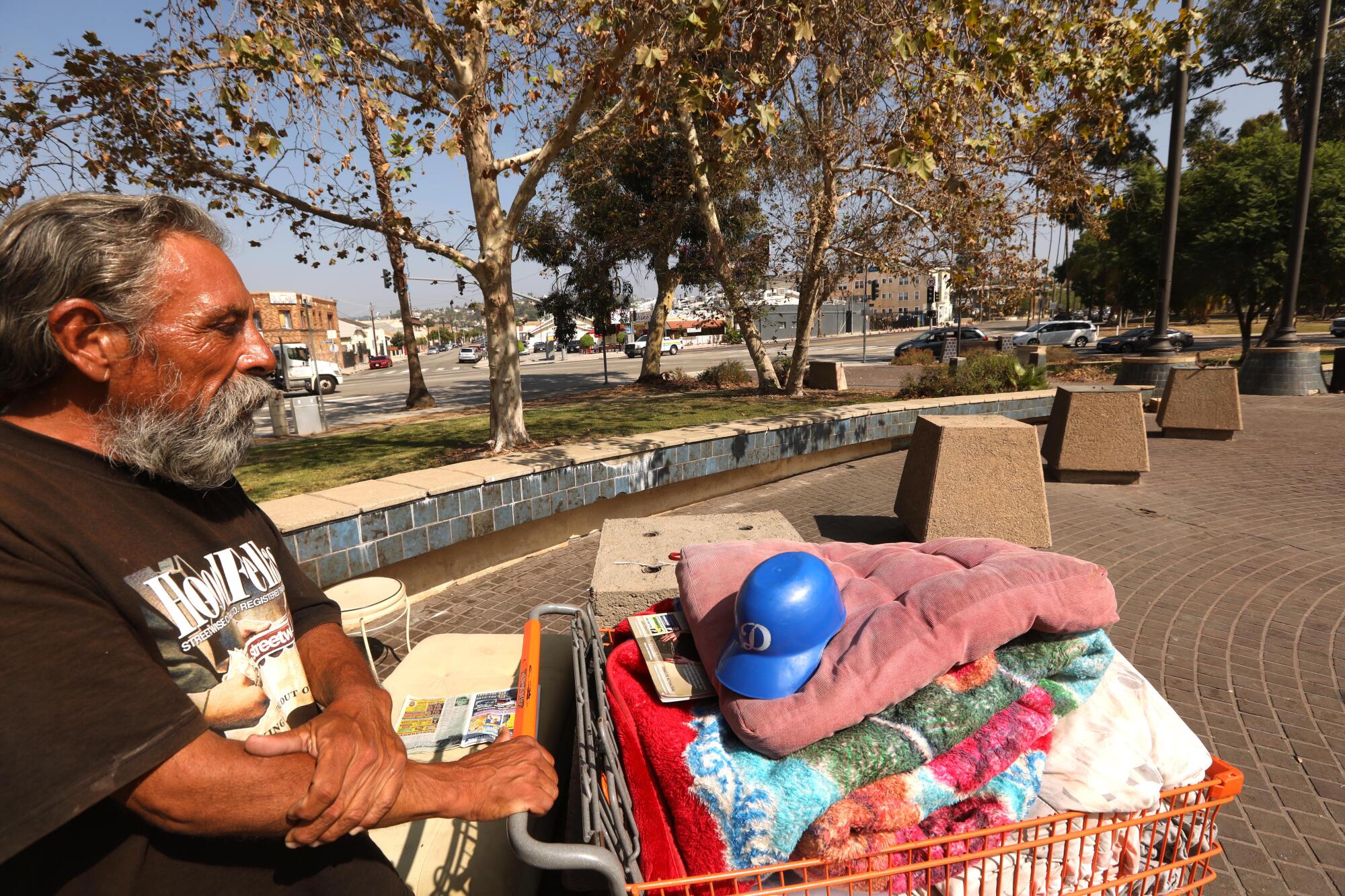
Among those facing steep rental debt is Luis Onchi, 53, who lives in Sylmar with his wife and two kids. They’ve rented a house there for 12 years, and Onchi said he’s always paid the rent on time.
But then the pandemic hit. Onchi, who is a gardener, went months without work. Then, last year, his whole family became sick with COVID-19. He applied for rental assistance but said he was mistakenly listed as high income and was denied.
Onchi makes additional payments when he can — and is back to paying the $2,268 monthly rent — but still owes $40,000. He said his landlord has taken him to court over it.
Upon hearing that renter protections could soon end, Onchi grew worried.
“Where am I supposed to go?” he asked. “We have nowhere to go.”
Times staff writer Liam Dillon contributed to this report.
- Share via
Watch L.A. Times Today at 7 p.m. on Spectrum News 1 on Channel 1 or live stream on the Spectrum News App. Palos Verdes Peninsula and Orange County viewers can watch on Cox Systems on channel 99.
More to Read
Sign up for Essential California
The most important California stories and recommendations in your inbox every morning.
You may occasionally receive promotional content from the Los Angeles Times.
